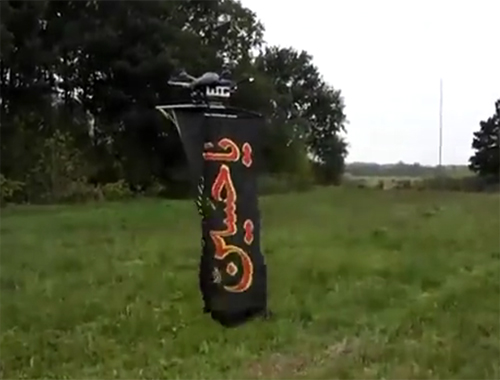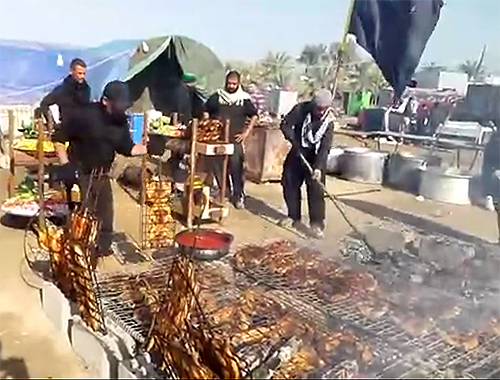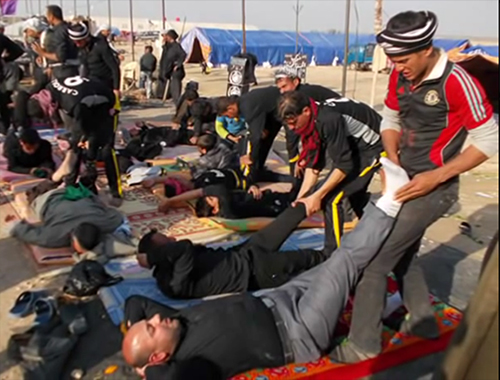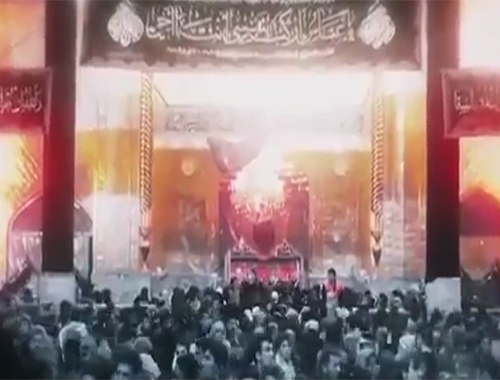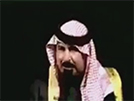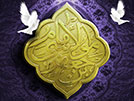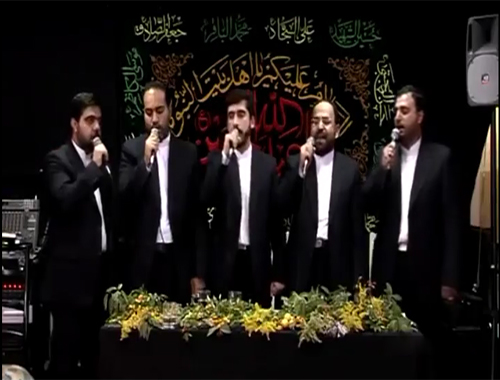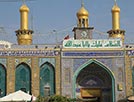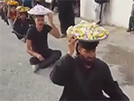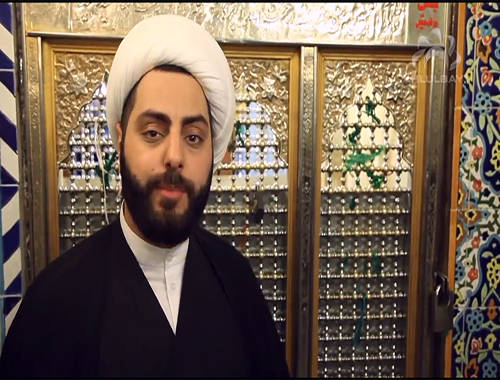History of the Shrines at Karbala
- Details
- Hits: 30010
Unlike any other city, Karbala has its named engraved in the memory of generations, and in the expanse of the Muslim world...
Believers remember that name with sorrow and distress, for they remember the history of the master of all martyrs, Imam Husayn, peace be upon him, and his sacrifice for Islam.
The wave of visitors never stopped coming to Karbala, from the time the Umayyad and Abbaside caliphs prevented the construction of the shrines to the time the believers were able to build the precinct, despite the hardships and difficulties imposed on them.
And today, since Karbala is witnessing new calamities, and the mausoleums of Imam Husayn [a] and his companions are subjected to destruction and neglect, and visitors are prevented from reaching that place, it is suitable to familiarise ourselves with Karbala...
Two main roads lead the visitor to Karbala. One is from the Iraqi capital Baghdad, through Al-Musails, and the other is from the holy city of Najaf. However, either one excites the visitor with its greenish scenery along the sides.
Upon reaching Karbala, the holy place would draw the visitor's attention to its glorious minarets and domes shining due to the light of its lord.
At the city's entrance, the visitor finds a row of houses decorated with wooden columns, and while proceeding further towards the holy mausoleum, he sees architechture similar, to some extent, to modern ones.
Upon reaching the holy shrine, one finds himself in front of a boundary wall that surrounds wooden gates covered with glass decorations, and when one enters one of those gates, he enters a precinct surrounded by small rooms called "I wans".
The holy grave is located in the middle of the precinct, surrounded by square shaped structures called "Rawaq".
The grave itself is located in the middle of the grave site with golden windows around it, with beautiful illumination. It really is something great to see.
"Karbala" Origin & Meaning
There are many opinions among different investigators, as to the origin of the word "Karbala".
Some have pointed out that "Karbala" has a connection to the "Karbalato" language, while others attempt to derive the meaning of word "Karbala" by analysing its spelling and language. They conclude that it originates from the Arabic word "Kar Babel" which was a group of ancient Babylonian villages that included Nainawa, Al-Ghadiriyya, Karbella, Al-Nawaweess, and Al-Heer. This last name is today known as Al-Hair and is where Imam Husayn's [a] grave is located.
The investigator Yaqut al-Hamawy had pointed out that the meaning of "Karbala" could have several explanations, one of which is that the place where Imam Husayn [a] was killed is made of soft earth - "Al-Karbalat".
Other writers made the connection between the name and the disastrous event which painted the desert with blood, and so the word "Karbala" was said to compose of two Arabic words: "Karb" meaning grief and sorrow, and "Balaa" meaning affliction. Such a connection, in fact, has no scientific evidence, since Karbala was known as such even before the arrival of Imam Husayn, peace be upon him.
Martyrdom and popularity
Karbala was at first an uninhabited place and did not witness any construction activity, although it was rich in water and its soil fertile.
Following the tenth of Muharram 61 AH (680 AD), after the martyrdom of Imam Husayn [a], people from far as well as tribes living nearby started visiting the holy grave.
A lot of those who came, stayed behind and/or asked their relatives to bury them there after their demise.
Despite many attempts by successive rulers, such as Al-Rashid and Al-Mutawakkil, to put a restriction on the development of this area, it has nonetheless spread with time to become a city.
Bounty of visiting Imam Husayn [a]
There is a lot of benefit and great spiritual reward in visiting the grave of Imam Husayn [a]. The Prophet [s] has said of his grandson Imam Husayn [a]: "Husayn is of me and I am of him". Several narrations mention that visiting the grave of Imam Husayn [a] relieves one of worldly afflictions as well as those after death.
Believers, therefore, come from all parts of the world all year round to receive the honour of visiting Imam Husayn [a], particularly during the first ten days of Muharram (Ashura) and the twentieth of Safar (the fourtieth).
One common Iraqi custom during that season is to go walking from Najaf to Karbala, reflecting their strong adhesion to and adoption of the morals and principles for which Imam Husayn [a] struggled and attained martyrdom.
Mausoleum of Imam Husayn, peace be upon him
The historian Ibn Kuluwayh mentioned that those who buried Imam Husayn [a], made a special and rigid construction with signs above the grave.
Higher and bigger constructions above the grave started during the ruling of Al-Saffah, but Harun al-Rashid later on, put heavy restrictions to prevent people from visiting the grave.
At the time of Al-Mamun, construction around the grave resumed until the year 236 AH when Al-Mutawakkil ordered the destruction and digging of the grave, and then filling the pit with water. His son, who succeeded him, allowed people to visit the grave site, and since then building the precinct to the grave increased and developed step by step.
On the other hand, the historian Ibn Al-Athir, stated that in the year 371 AH, Aadod Al-Dawla Al-Boowayhi became the first to largely lay the foundations for large scale construction, and generously decorated the place. He also built houses and markets around the precinct, and surrounded Karbala with a high boundary wall turning it into a strong castle.
In the year 407 AH, the precinct caught fire due to the dropping of two large candles on the wooden decorations, but Hasan ibn Fadl (the state minister) rebuilt the damaged sections.
History has recorded the names of several rulers who shared the honour of widening, decorating or keeping the precinct in good condition. Amongst them is Fateh Ali al-Qajari, who in 1250 AH ordered the construction of two domes. One over Imam Husayn's [a] grave and the other over his brother Abu al-Fadl Abbas [a].
The first dome is 27 meters high and completely covered with gold. At the bottom, it is surrounded with 12 windows, each of which is about 1.25 m away from the other, from the inside, and 1.30 m from the outside.
The mausoleum has an area of 59 m / 75 m with ten gates, and about 65 rooms (I wans), well decorated from the inside and outside, used as classrooms for studying.
As for the grave itself, in the middle of the precinct, it is called the "Rawda" or garden and it has several doors. The most famous one is called "Al-Qibla" or "Bab al-Dhahab". When it is entered, one can see the tomb of Habib ibn Madhahir al-Asadi, to the right hand side. Habib was a friend and companion of Imam Husayn [a] since their childhood. He was one of those who was honoured with martrdom at the Battle of Karbala.
The resting place of Abbas b. Ali, peace be upon him
Abu al-Fadl Abbas, peace be upon him, was the brother of Imam Hasan [a] and Imam Husayn [a] and the standard-bearer of Imam Husayn [a] in the Battle of Karbala. He is well known in history for his valour, loyalty and similarity to his father, the Lion of God, Ali b. Abi Talib, peace be upon him.
The grave of Abbas [a] received similar attention as that of Imam Husayn [a]. In the year 1032 AH, the King Tahmaseb ordered the decoration of the grave's dome. He built a window on the 'darih' around the grave and organized the precinct. Other similar activities were done by other rulers.
As a matter of fact, Karbala contains, besides the grave of Imam Husayn [a] and his brother, the grave of all the 72 martyrs of Karbala. They were buried in a mass grave which was then covered with soil to the ground level. This mass grave is at the foot of Imam Husayn's [a] grave. In particular, besides Imam Husayn's grave are the graves of his two sons Ali Akbar and 6-month old Ali Asgher.
Chronology of Imam Husayn's Shrine at Karbala
61 AH, 1st October, 680
Imam Husayn [a] was buried at this sacred spot.
65 AH, 18th August, 684
Mukhtar ibn Abu Obaidah Thaqafi built an enclosure around the grave, in the form of a mosque and erected a dome over the grave. There were two entrances to this building.
132 AH, 12th August, 749
A roof was built over a part of this mosque and two entrances were added during the reign of as-Saffah.
140 AH, 31st March, 763
The roof was demolished during the reign of al-Mansur.
158 AH, 11th November, 774
During the reign of Mahdi the roof was reconstructed.
171 AH, 22nd June, 787
During the reign of Al-Rashid the dome and the roof were demolished and the plum tree which stood near the grave was cut down.
193 AH, 25th October, 808
During the reign of Amin the building was reconstructed.
236 AH, 15th July, 850
Mutawakkil demolished the buildings and ordered that the land should be ploughed.
247 AH, 17th March, 861
Muntasir built a roof over the grave and set up an iron pillar near it, to serve as a landmark for the pilgrims.
273 AH, 8th June, 886
The roof was demolished again.
280 AH, 23rd March, 893
The Alid representative built a dome in the centre, with two roofs, on either side and an enclosure with two entrances.
307 AH, 19th August, 977
Adzd ibn Boweih rebuilt the dome, the surrounding galleries and constructed a screen of teak wood around the sepulchre. He also constructed houses all round the shrine and erected the boundary wall of the city. At the same time Imran ibn Shahin built a mosque adjacent to the tomb.
407 AH, 10th June, 1016
The buildings were damaged by fire and the Vizier, Al-Hasan ibn al Fadi rebuilt them.
620 AH, 4th February, 1223
Nasir le-din-Illah reconstructed the screens of the sepulchre.
757 AH, 18th Sept. 1365
Sultan Owais ibn Hasan Jalairi remodelled the dome and raised the walls of the enclosure.
780 AH, 24th Feb. 1384
Ahmad ibn Owais erected two minarets covered with gold and extended the courtyard.
920 AH, 26th Feb. 1514
When Shah Ismail Safawi visited the holy shrine he built a sacrophagus of the inlaid work over the grave.
1032 AH, 5th Nov. 1622
Shah Abbas Safavi constructed the screens (darih) of brass and bronze and decorated the dome with Kashi tiles.
1048 AH, 15th May 1638
Sultan Murad IV, when he visited the holy shrine, whitewashed the dome.
1155 AH, 8th March 1742
Nadir Shah visited the holy shrine and decorated the building and offered valuable presents to the treasury of the shrine.
1211 AH, 7th July 1796
Shah Muhammad Qachar covered the dome of the shrine with gold.
1216 AH, 14th May, 1801
Wahhabis attacked Kerbala, spoiled the screens and portico and looted the shrine.
1232 AH, 21st Nov., 1817
Fateh Ali Shah Qachar repaired the screens and plated them with silver. He also plated the centre of the main portico with gold and repaired the damage done by the Wahhabi robbers.
1283 AH, 16th May, 1866
Nasiruddin Shah Qachar extended the courtyard of the shrine.
1358 AH, 21st February, 1939
Dr. Syedna Taher Saifud-din, 51st Dai-el-Mutlaq of the Dawoodi Bohra community offered a set of screens of solid silver which are fixed in the shrine.
1360 AH, 29th January, 1941
Dr. Syedna Taher Saifud-din, 5lst Dai-el-Mutlaq of the Dawoodi Bohra community rebuilt the western minaret.
1367 AH, 20th Dec., 1948
Syed Abdul Rasul Khalsi, Administrator of Karbala acquired the houses in the neighbourhood of the courtyard according to the price fixed by the government, to build a road around the holy mausoleum and to extend the courtyard.

